
Tank was constituted as FC District in 1926. The force has been
deployed to quell the diabolical designs of the tribals and other
miscreants. It would act to reinforce the main striking force in any
active sector. Further, FC is also responsible for the protection of the
government infrastructure.

At the time of its annexation with the British India in 1841, this area
was ripe with internal disturbance. The Durrani Kingdom of Afghanistan
hatched a conspiracy to regain the pakhtoon soil. However, their
strategy failed miserably and the territory of Afghans across the Indus
River was completely annexed. In order to prevent and curb the
nefarious activities of anti-social elements a small contingent of the
local tribes was organized in Kohat district and named as “Samana
Rifles”.
The main duties of FC Hangu are to guard and police the roads linking
agencies with the settled districts in order to prevent smuggling of
arms & ammunition, escape of criminals and attacks of miscreants.
Moreover, a considerable strength of FC Hangu has been involved in
conducting operations in FR Kohat, Dara Adamkhel, Pastawana, Orakzai
Agency since 2010.

Bannu was sanctioned as FC District in 1913 with its posts extending
along the Wazir and Bhittani border from Khurrum Garhi in the north to
Khairukhel in the south. The geographical contiguity of Bannu with the
turbulent Waziristan has made it strategically quite important for
ensuring homeland security

Frontier Constabulary Bara was established during 1913 on the periphery
of Khyber Agency joining the Peshawar city. The prominent FC posts
include Aimal Chabotra, Shamshatoo and Mackson Fort. These secure the
entrances to the Peshawar city. FC Bara has remained involved in a
number of operations against the militants including Operation Spring
Cleaning

Oghi was established as an FC District along with the inception of
Frontier Constabulary itself in 1913. It was the headquarters of FC
deployed in the then District Hazara. Its main purpose was to guard the
Black Mountain and Utmanzai border to the east and tribal border to the
north. These areas had remained quite turbulent in the past but they
have been considerably complacent for last few decades.

FC Post Darband was constructed during 1913-15 on the western border of Dera Ismail Khan at a distance of 60 kilometers. Other FC posts of Zarkani, Luni and Surkamar on northern sides of FC post Daraban block the valleys / routes leading from FR to Settled area. FC Picket Zam has been constructed on the gate way of Sheranies land. FC Post Mughal Kot was built on the South West of FC headquarters Darazinda about 50 kilometers on the boundary of KP and Baluchistan to help the Sherani tribe against marauders. FC post Kohi Bahara built on Western / Southern side of FC post Darazinda at a distance of 60 kilometers on the boundary of KP and Punjab to stop the smuggling of arms.
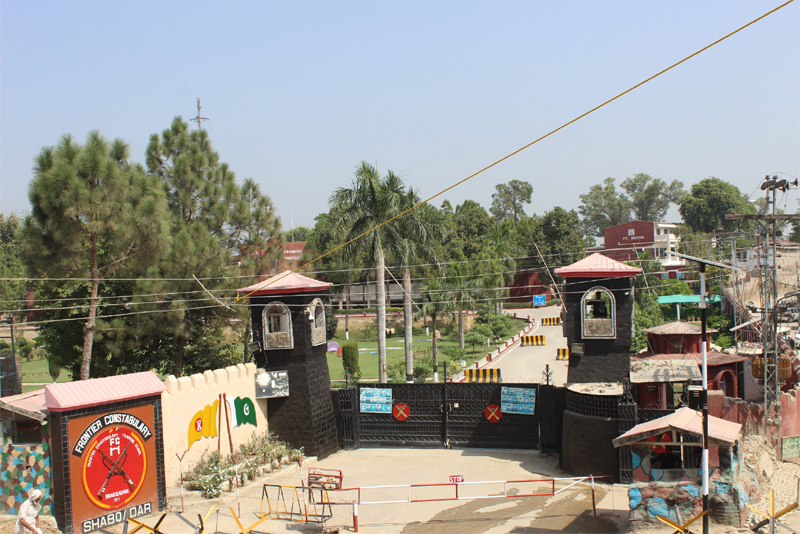
Shabqadar town is situated about 17 miles in the northwest of Peshawar.
It is also connected to Charsadda, Tangi and Mohmand Agency by road. It
separates the Peshawar valley from the mountainous Mohmand Agency thus
making it strategically quite significant. It used to provide
forewarnings to rulers in case of a foreign invasion. In the wake of its
geographical relevance, a fort was built and garrisoned. This
historical fort depicts a blend of old and new architecture.
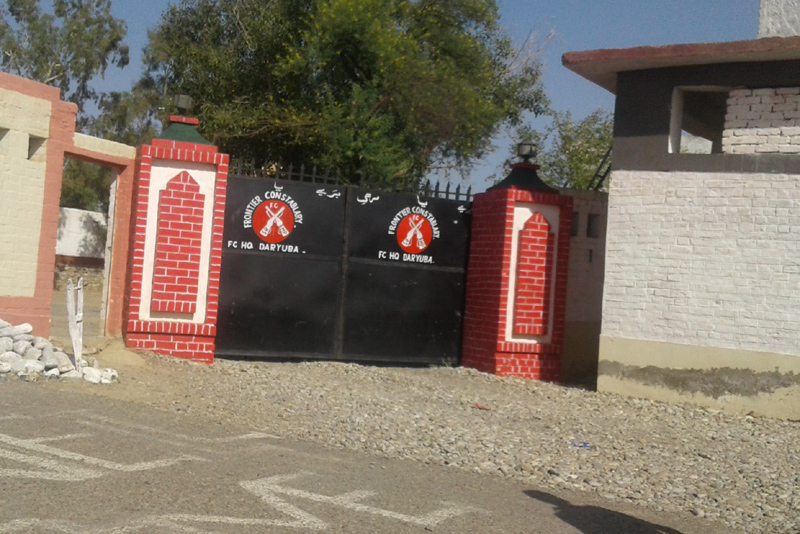
By the middle of nineteenth century, the British East India Company
extended its dominion to the foot hills of the India’s North West
Frontier. The border hills were relatively inaccessible strongholds of
various Pathan tribal clans, who had formed small gangs notorious for
crimes of kidnapping for ransom and plundering the markets. The British
employed the services of locals watch and ward.
Initially Daryoba was under the direct command of DOFC Bannu. However,
it was formed as an independent FC District in 1987 and housed in a fort
built in 1940 situated in the northern side of district Bannu. The
important posts of this district are Baran Dam, Khurrum Garhi, Head
Khurrum and Shaheedan.
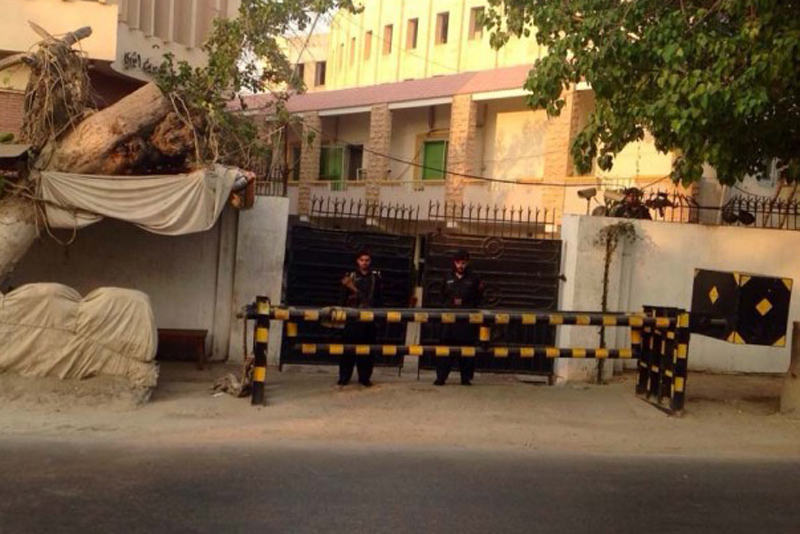
In 1959, four FC platoons were sent to Karachi to assist Sindh Police in
controlling the violence emanating from the linguistic dispute rife.
Keeping in view the efficacy of FC in managing the issue, the Government
of Sindh had been requisitioning deployment of more FC platoons
overtime. In 1996, the Finance Department of the Government of Sindh
gave a formal approval for raising indigenous FC platoons for the
District Karachi.
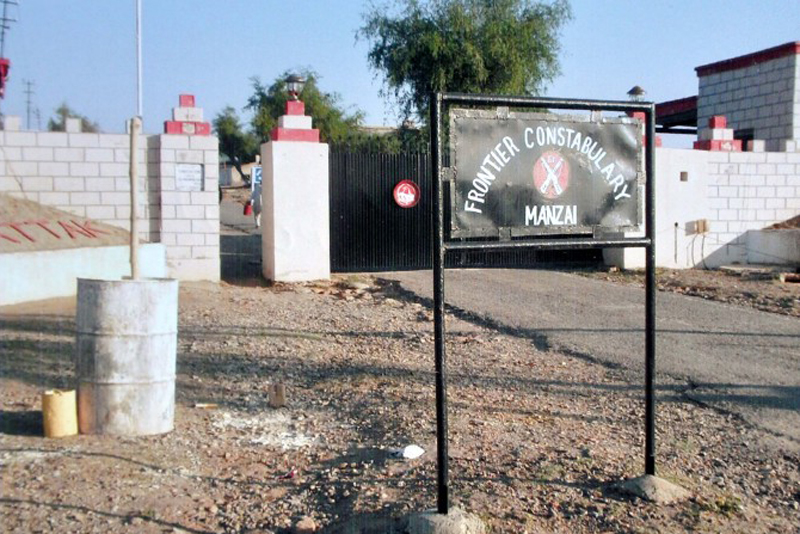
Manzai fort, constructed during 1928, remained with Frontier
Constabulary until it was handed over to Frontier Corps in 1943.
However, it was returned to Frontier Constabulary in 1960 and played a
significant role in performing anti-smuggling and anti-narcotics duty.
FC Manzai has been actively engaged in War on Terror since 2004.
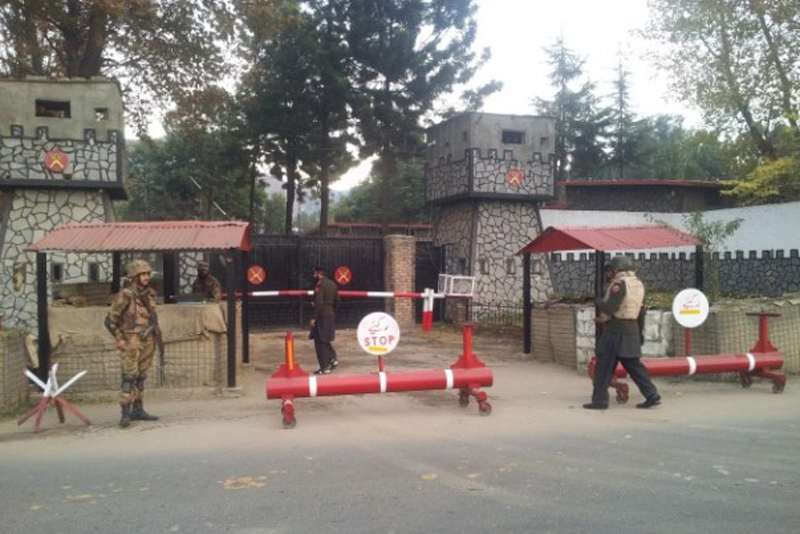
Swat was incorporated as FC District in 1971. The troops were initially
deployed at Amankot and in the old forts of Fateh Pur, Nala,
Durushkhela and Jawar. Later on the FC was shifted to a newly
constructed FC lines in Kanju Swat.
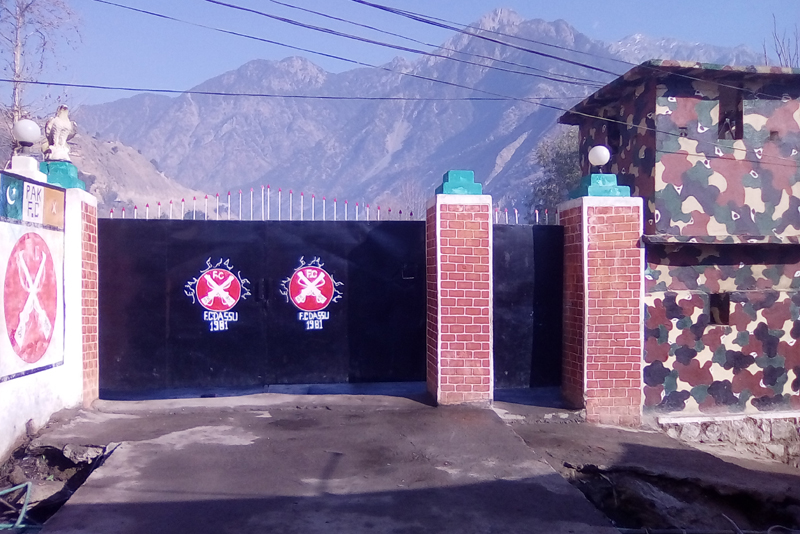
The Kohistan District is prominent for the successful expeditions of
Alexander, the great, and Ashoka. It contains few of the highest peaks
of the Karakoram Range. FC Kohistan was raised in 1981. Its headquarters
is situated at Komila. It has two FC posts, one at Pattan towards
Besham and the other at Shatial towards Chillas. Both the posts provide
security to the commuters on Karakoram Highway. Moreover, it is
providing security to chinese working on HPPs at Pattan, Dubair and
Besham.
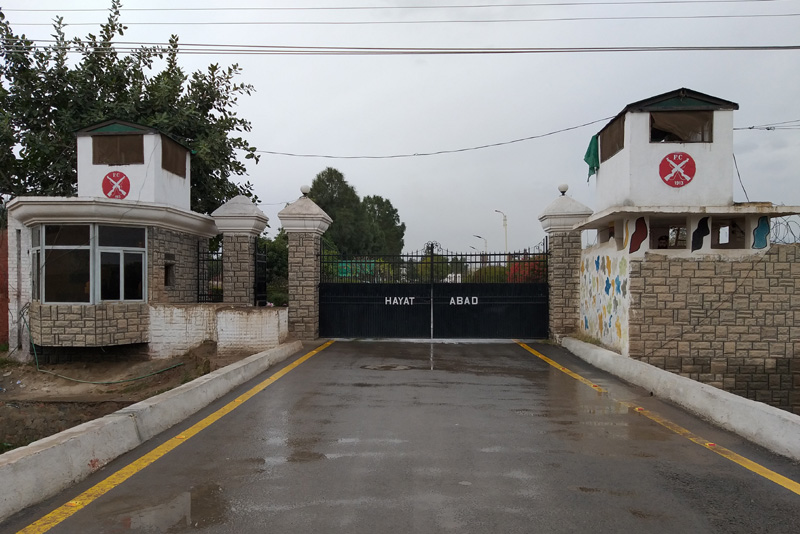
FC District Hayatabad derives its historicalness from its name “Pump
Castle FC”. However, before partition it served as reserve of Corps HQ
and was under the command of DOFC Bara. Subsequently, when Hayatabad
became the residential hub and crime rate rose considerably in the area,
it was given status of a proper FC district in 1985. It has several
posts and picquets which provide security to the industrial area and
Hayatabad residential area. Moreover FC posts of Regi Lalma PDA, World
food godowns, Sakhi Pull, Michni Pull, Shagai Fort and Sufaid Sang
protect Peshawar district from all directions. Moreover, the security of
American consulate, Iranian Consulate and Khana-e-Farang Iran has also
been handed over to FC Hayatabad.
FC District Hayatabad has a training center for the Quick Reponse Force.
There is a firing range facility available for trainees at and are 33
living barracks.
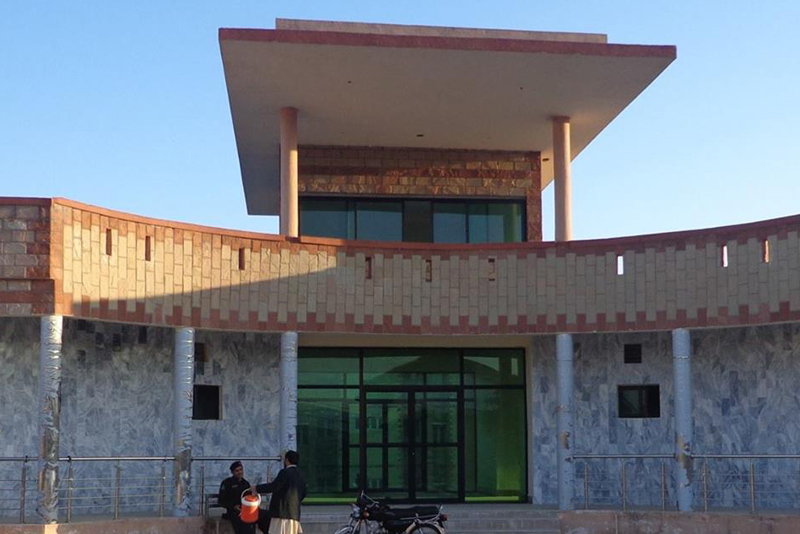
Frontier Constabulary, Islamabad was declared a permanent FC district in
2008. The pivotal function of FC Islamabad is to provide security to
foreigners, diplomats, embassies, consulates, ambassadors and other
vital installations as well to provide security to VVIPs in ICT. It is
worth mentioning that a permanent FC lines has been constructed which
will house all the administrative offices of FC Islamabad
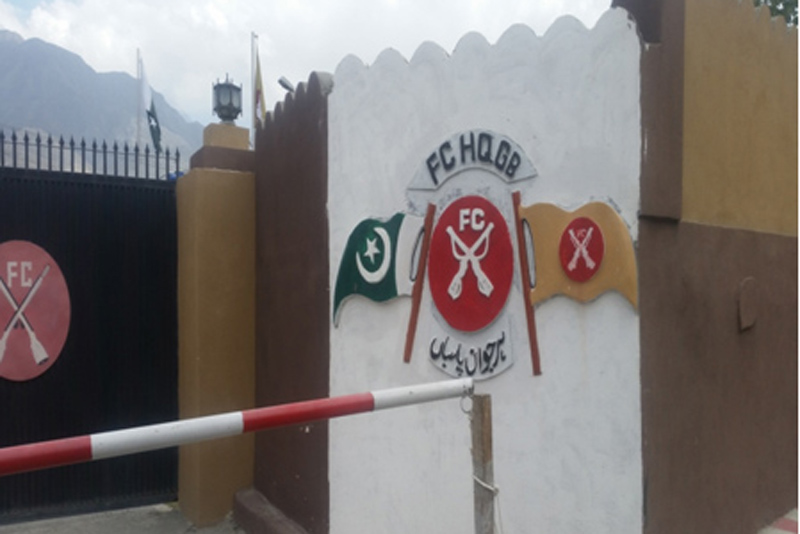
The administration of Gilgit Baltistan approached the Federal Government
during 1985 for deployment of 12 FC platoons to provide assistance for
maintaining law and order in the area. In pursuance of the demand,
initially four FC platoons were deployed which were reinforced by
additional platoons during the sectarian strife of 1986. In wake of the
aggravating situation and compelling demands, Gilgit was incorporated as
FC District in 1988 and more platoons were deployed. Since then FC has
been effectively engaged in countering the menace of sectarian violence.
It has been deployed in Chillas, Gilgit city and Central Jail, Gilgit.
FC is performing duties in a composite force called Karakorum Task Force
which is dedicated to protecting the Karakorum highway.
In recent past, FC took part in many operations conducted in Diamer
Region in collaboration with military and district police. FC Gilgit
took the lead role in Darail operation launched in August, 2013 in which
numerous terrorists involved in Nanga Parbat incident were apprehended.
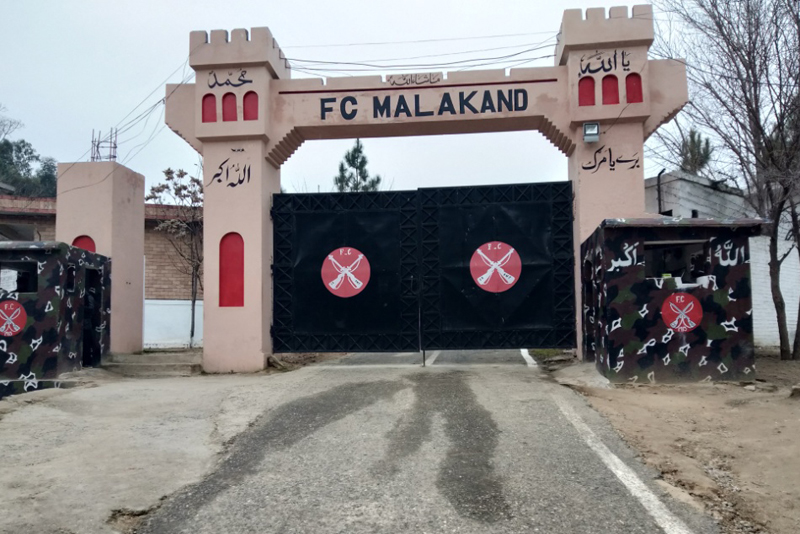
Malakand was made FC District in November, 1996. Initially it started
its operational working in a rented building which was shifted to a
newly constructed complex in 2003. It has numerous piquets established
along the main highway towards Swat and Dir. These posts are present on
hill tops of Malakand. Moreover, numerous platoons of FC Malakand have
been deployed on maintenance of internal security and writ of the
government along with Pakistan Army in the regions of Swat, Buner, Bara,
FR Kohat and Orakzai Agency.
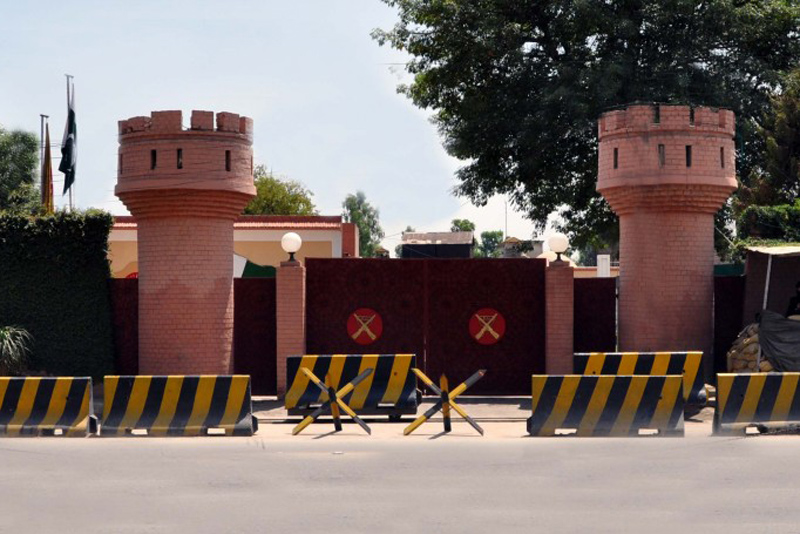
Frontier Constabulary (FC), Khyber Pakhtunkhwa was established by
amalgamation of Border Military Police (BMP) and Samana Rifles (SR) in
1913. It derives its name from the fact that it was initially entrusted
with the cardinal task of policing the frontiers that separated the
settled districts of the province of Khyber Pakhtunkhwa (the then North
West Frontier Province) and the tribal areas against tribal incursions,
criminal gangs and marauders operating across this buffer zone.
However, owing to the prevalent reign of terrorism and deteriorating law
& order situation in the country, FC has been entrusted with
numerous multifarious and multidimensional tasks in addition to its
cardinal function. These duties include supporting law enforcement
agencies (LEAs) in controlling law & order situation and providing
security to diplomats, vital government installations, VVIPs/VIPs,
multi-national companies (MNCs) and hydro-power projects (HPPs).
FC has suffered heavy losses on account of infrastructure as well as
human resource in the prevalent war on terror. Around 300 FC personnel
have embraced martyrdom and a similar numbers have been injured. This
includes martyrdom of Mr. Safwat Ghyur, the then Commandant Frontier
Constabulary.
It is pertinent to mention that Frontier Constabulary has completed its
100 years during the year 2013. In order to commemorate and highlight
the services rendered by this force, a week long centennial celebrations
have been planned in the month of December.